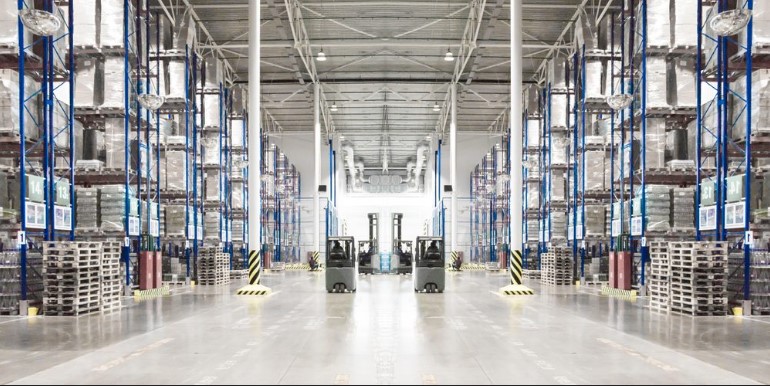
Over the past years, the warehousing and distribution industry in Singapore has undergone significant changes. As businesses look to improve their supply chains further, several trends are emerging to meet the ever-increasing demand for efficiency and sustainability. However, in this blog, we discuss some of the latest trends in warehousing and distribution services, focusing on warehouse space optimization and how the logistics landscape is evolving in warehouse Singapore.
Rising Demand for Warehouse Space in Singapore
Warehouse space in Singapore is highly in demand these days due to growth in the e-commerce, manufacturing, and retail sectors. Now companies require more spacious and efficient spaces to hold massive inventories based on the customers’ requirements. In this direction, several companies have been on the lookout to optimize warehouse space while making the entire distribution process better than before.
Trend 1: Vertical Storage Solutions
Warehouse optimization is achieved through several efficient means, among which is the maximization of vertical space. Furthermore, companies have become more and more keen to use taller racks and automated systems in the storage of higher-level products, freeing up floor space for other operations.
Multi-Tenant Warehousing
Because warehouse space in Singapore has become scarce, multi-tenant warehousing has become on the rise. Under this trend, businesses take up shared space within warehouses with other businesses, thus lowering costs without suffocating operationally.
Flexible Lease Agreements
Flexibility in Warehouse Leasing
Under uncertain market conditions, firms prefer flexible lease agreements for the warehouse. Moreover, that helps firms scale up and down their warehousing requirements according to demand and prevents them from locking into the long term.
Going Green in Warehousing
To reduce carbon footprint, companies are focusing on sustainable warehouse solutions that have the minimum environmental impact. Additionally, from energy-efficient lighting to solar-powered warehouses, Singapore is witnessing increased efforts toward greener operations.
The Role of Technology in Optimizing Warehouse Space
Technological advancement is key in optimizing warehouse space in Singapore. Innovations are facilitating better utilization of storage facilities by companies. This ensures increased productivity and savings.
Automated Storage and Retrieval Systems (ASRS)
ASRS is increasingly used to maximize warehouse space. It automatizes the picking of goods. Thus, there are reduced man-hours and fastening pick operations with increased speed and accuracy.
Warehouse Management Systems (WMS)
WMS software ensures businesses utilize the warehouse space better. Real-time data on the inventory level allows firms to utilize the storage space while minimizing waste.
The Shift Toward Smart Warehousing in Singapore
In Singapore, the demand for warehousing and distributing goods has been growing. With the advancement in technology, smart warehousing solutions are replacing conventional warehouses. Smart warehouses benefit from advanced technology, reducing human intervention and streamlining activities.
What’s Smart Warehousing?
IoT
IoT-enabled devices play a very integral role in smart warehouses that can monitor the present inventory levels, track shipments, and provide real-time data regarding warehouse operations. Such technology ensures better management of warehouse space and distribution services.
Artificial Intelligence and Machine Learning
AI and machine learning technologies are revolutionizing warehousing, where they predict demand, optimize inventory, and improve overall efficiency. It analyzes historical data to help businesses better manage their space in the warehouse within Singapore.
Robotics and Automation
Automation has made warehousing and distribution services increasingly less labour-intensive and highly accurate. The task of picking, packing, and even sorting products is now being employed in robots through faster and more efficient operations.
Drones for Inventory Management
Drones are now utilized in inventory management in intelligent warehouses, bringing about real-time data on stock levels. In a business setup, they have diminished the manual inventory check frequency and brought about higher accuracy.
Benefits of Smart Warehousing
Increased Efficiency
Smart warehouses enable organizations to automate their activities, meaning saving time and labour employed in the process of doing the actual manual work. There is a quick turnaround while using automation and artificial intelligence to speed up productivity and distribution services.
Lower Costs
A smart warehouse optimizes the use of warehouse space while automating operations that help organizations reduce costs of operation. There is a lower chance of errors and procedures happening faster, hence the organization realizes the benefits through cost-saving over a reasonable period.
Improved Customer Satisfaction
Smarter warehousing solutions enable companies to process orders faster, thereby promoting excellent customer satisfaction. Additionally, effective inventory management ensures that products arrive just at the right time for distribution.
Sustainable Warehousing and Distribution Services
With the increasing concern for the environment, the entire warehousing industry, along with its distribution services in Singapore today, is highly interested in becoming sustainable. Consequently, companies are finding ways to minimize their carbon footprint, which has, in turn, brought sustainability into warehouses.
Sustainable Trends in Warehousing:
Energy-Efficient Warehouses
Many warehouses in Singapore have introduced energy-efficient lighting, like LED lights, to minimize energy consumption. Warehouses now install solar panels on rooftops to ensure renewable energy generation.
Use of Green Building Materials
The use of green building materials such as recycled steel and eco-friendly insulation is increasingly popular for Warehouse space. It reduces the environmental impact of building and maintaining warehouse space.
Eco-Friendly Packaging Solutions
Many warehouses now adopt biodegradable and recyclable packaging materials. Consequently, companies will pay attention to this trend as they focus on environmentally friendly merchandise to cater to the demands of their consumers.
The Rise of Last-Mile Delivery Solutions
Last-mile delivery is the final leg of the distribution process, where products are delivered from the warehouse to the customer. The trend of e-commerce coming to Singapore has made last-mile delivery extremely important in warehousing and distribution services.
Key Trends in Last-Mile Delivery:
Same-Day and Next-Day Delivery
Currently, consumers want faster delivery, which has spurred the rise of same-day and next-day delivery. The warehouses have to adapt to this trend through the streamlining of their operations to make sure that products are always ready for fast dispatch.
Environment-Friendly Last-Mile Solutions
Companies are embracing environment-friendly delivery solutions in the form of electric vehicles and bike couriers as a way of reducing carbon footprints. These delivery solutions are finding more traction in the cityscapes of Singapore.
Micro-Fulfillment Centers
In a bid to keep pace with the fast-growing pressure of delivery, businesses are now coming up with micro-fulfilment centres near their customers. Consequently, companies can store products closer to areas of high demand, thus reducing both delivery time and cost.
Automated Delivery System
Automation is becoming increasingly a part of last-mile delivery nowadays. Through research and development, autonomous delivery vehicles and drones are being tested for completion of the delivery process and reduction in dependency on human drivers.
Challenges in Last-Mile Delivery
While last-mile delivery offers many benefits, it also presents significant challenges to warehousing and distribution services in Singapore. Traffic jams, high delivery costs, and logistical constraints create substantial disadvantages.
Traffic Congestion
The urban environment of Singapore presents the possibility of traffic congestion as such it can result in certain delays that affect last-mile delivery. Warehouses have to plan very keenly their delivery schedules to reduce the impact of congestion on distribution.
High Delivery Costs
The final stage of getting a product to its destination can sometimes be deemed the most costly stage in the delivery process. Therefore, companies need to find ways to reduce the costs incurred at the end-point stages without compromising their speed and efficiency of delivery.
Conclusion
The warehousing and distribution industries in Singapore are gaining more advantages on this front due to technological advancement, along with the recent push toward sustainability apart from the demand for faster services. Businesses that need to compete have to optimize warehouse space with smart solutions through vertical storage, automated systems, and sustainability. Finally, these developments would enable companies to remain efficient, cost-effective, and green to continue meeting the logistics of tomorrow in Singapore.
Also Check: Maximizing Efficiency in Your Warehouse with Shrink Wrap Machines




